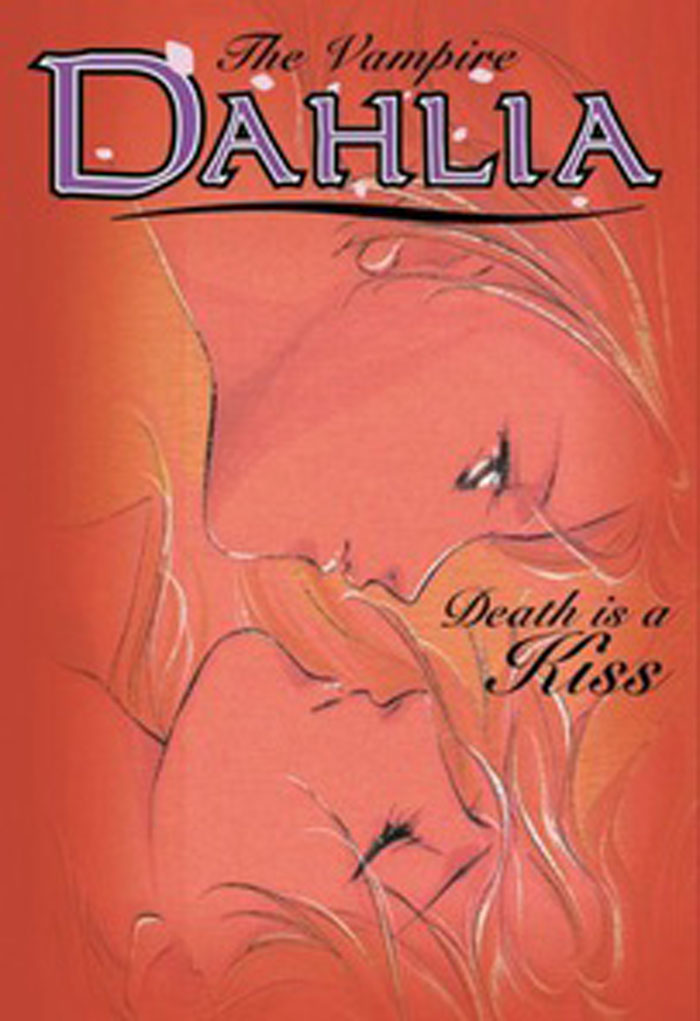
Death Is a Kiss
by Narumi KAKINOUCHI.
© 1992 Narumi Kakinouchi
[Review copy provided by Studio Ironcat, L.L.C.]
Eternity sounds like a wonderful thing, especially if given the chance to share it with a loved one. But what happens when two lovers are forced apart by circumstances beyond their control?
If you’re immortal, it can be your own, private hell.
This is the fate faced by the elegant protagonist of The Vampire Dahlia, the latest Narumi Kakinouchi work to delve into the supernatural world first portrayed in the Vampire Princess Miyu and Vampire Yui manga. Available domestically as six comic issues or as a single graphic novel from Studio Ironcat/I.C. Entertainment, Dahlia is a marked departure from Kakinouchi’s other vampire leads.
Dahlia is desperately alone, left with vivid memories from when she was alive and when she fell in love with a handsome artist who also happened to be a vampire. He waited for her, and, in the time it took for her to grow up, she became his muse. Then tragedy stuck: Instead of the forever they thought they had, he began to age and, eventually, passed on. He left her with one, all-consuming belief — that he would be reincarnated.
Now it is Dahlia’s turn to wait for her beloved Ranan. What form will he take? Will he recognize her? She haunts places precious to them both, including the house they shared, as part of her interminable vigil.
In the first of two story arcs, Dahlia is diverted by a teenager who closely resembles her lost love. This does not escape the attention of her catty and prejudiced classmates, who plot to humiliate her, harm her and expose her secrets. To them, she is an easy mark — just a transfer student with an unusual appearance and no allies. They have no idea her cool façade hides her true nature: that of a vampire who will overcome any obstacle that stands in the way of recovering the one man for whom she longs.
Kakinouchi’s uniformly excellent art is detailed and moody during the flashback and stream of consciousness sequences that give insight into Dahlia and serve as a bridge between her memories of the past and the clear, finely-drawn lines of present-day. These “bridge” sequences are especially telling, as they mirror the inner-turmoil caused by the clashing of these two times. It is something she must face everyday… Alone.
Unlike Kakinouchi’s other famous vampires, Dahlia truly travels through time in a solitary fashion. She has no friends or companions, and she must rely upon her own wits when she gets into difficult situations. She doesn’t have guilt over being a vampire. The things she does to survive and protect herself are all in the name of reuniting with Ranan. Her singular pursuit of and intense longing for this ultimate goal, at once make her inhuman and imbue her vignettes with a mature resonance and sense of empathy that matches the visual intensity of the work’s more macabre elements.
Kakinouchi’s refusal to pass judgment on her creation forces Dahlia beyond the traditional role of the tragic heroine. Dahlia isn’t good or bad. She just is.
This moral ambiguity — accompanied and contradicted by the lead character’s particular brand of pure-heartedness — make The Vampire Dahlia a challenging story of love, loss and longing that fans of the author-artist’s other works will enjoy.
More Info:
THE VAMPIRE DAHLIA Graphic Novel: Death Is a Kiss © 1992 Narumi Kakinouchi. Originally published by Akita Pub. Co., Ltd., Tokyo, Japan. English translation rights arranged between Akita Pub. Co., Ltd. and Studio Ironcat, L.L.C. All rights reserved.